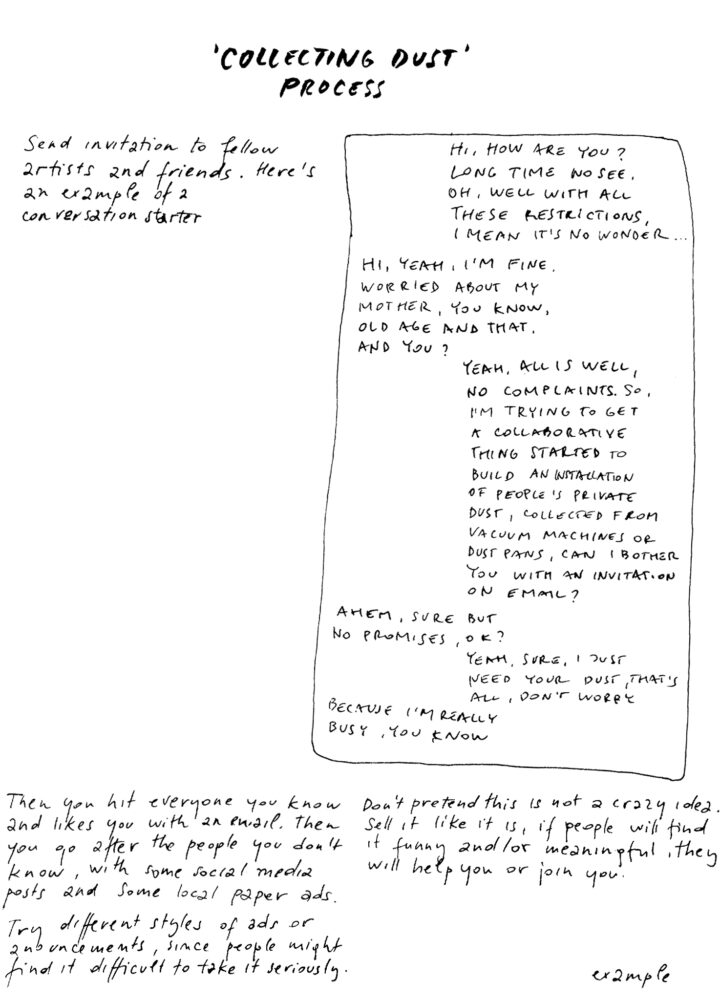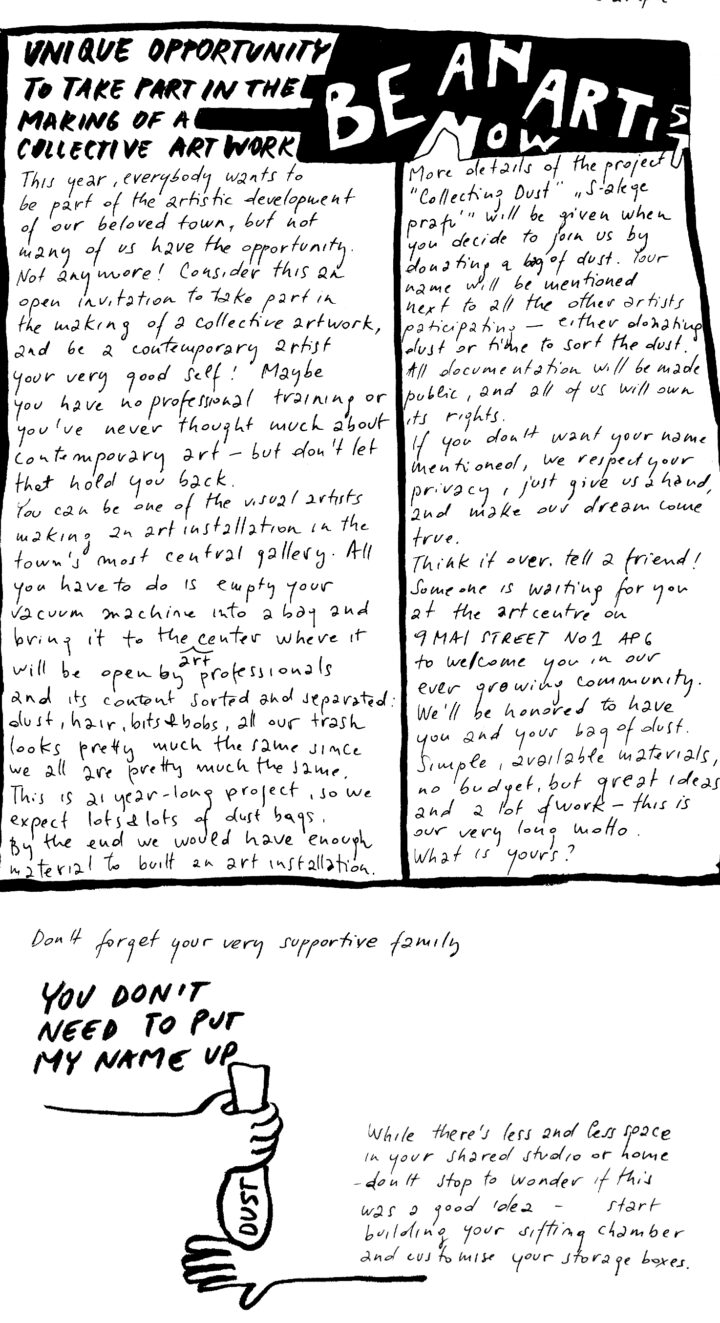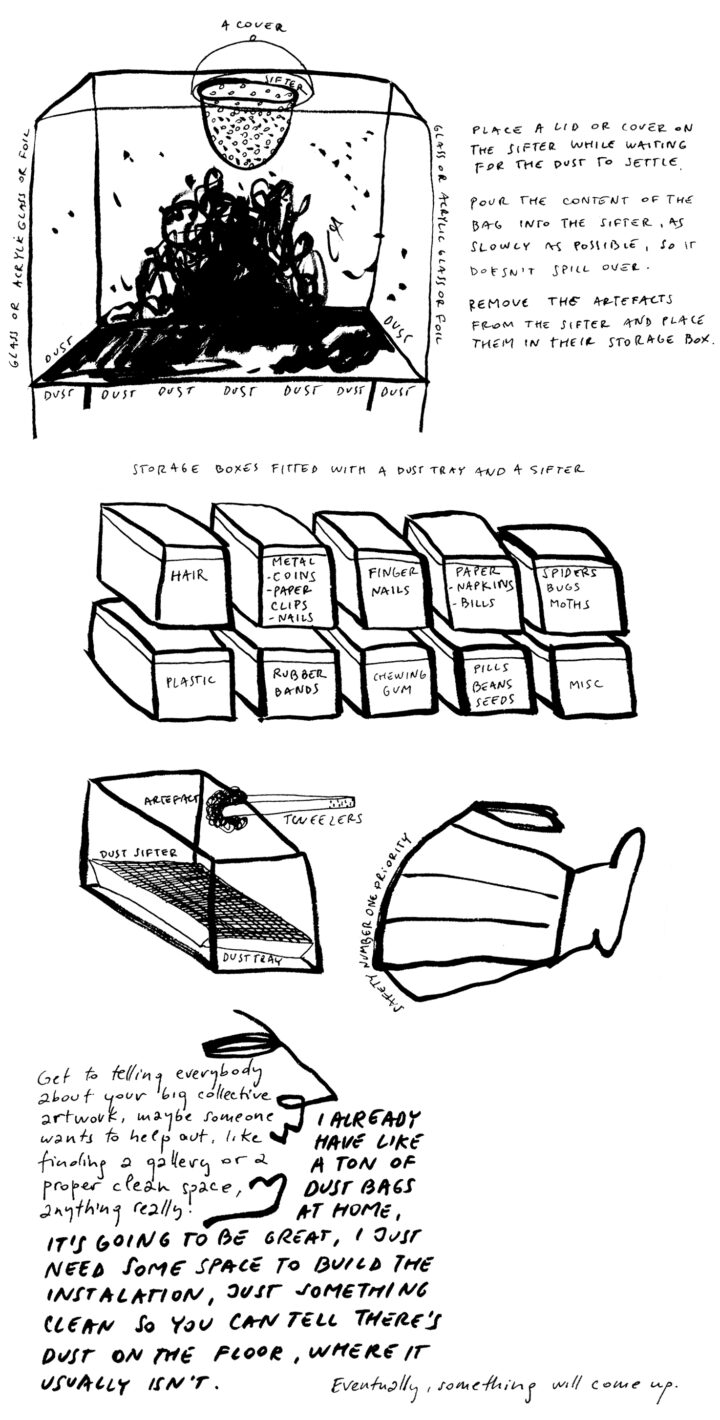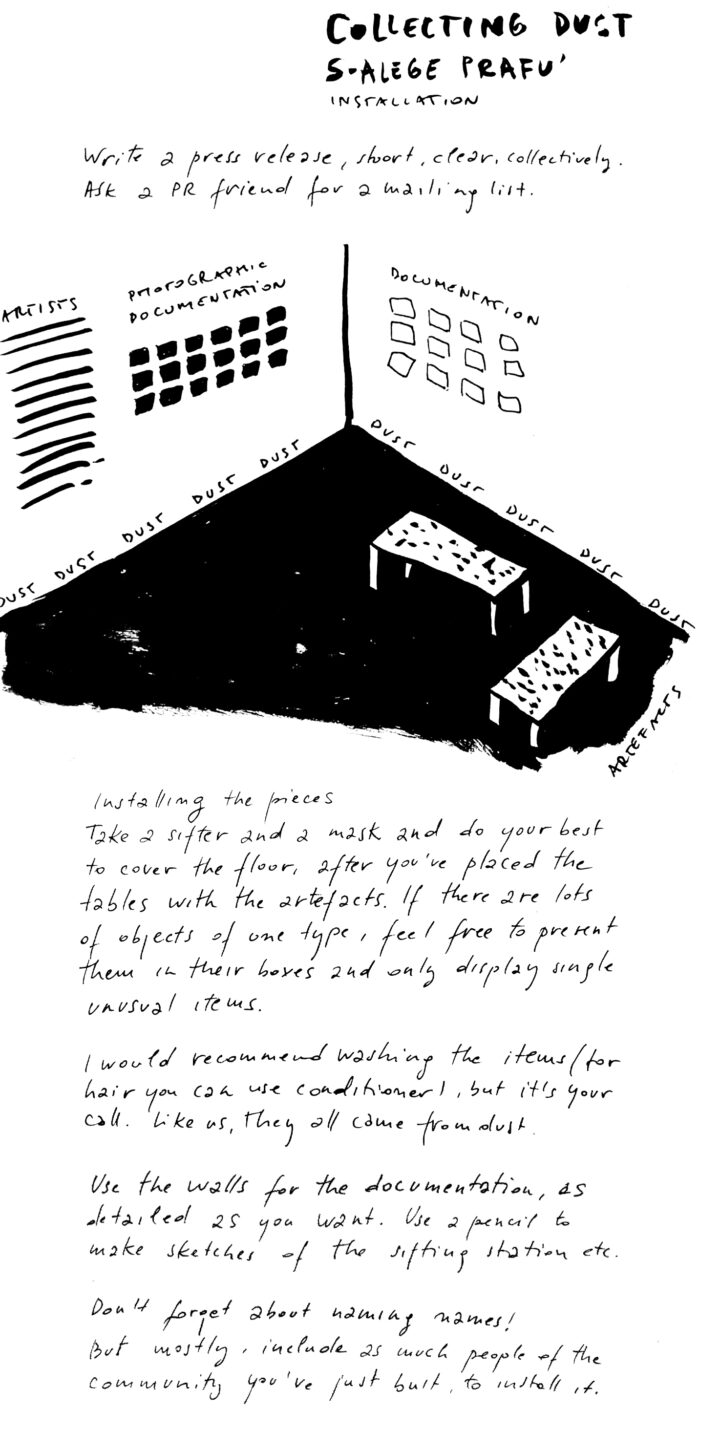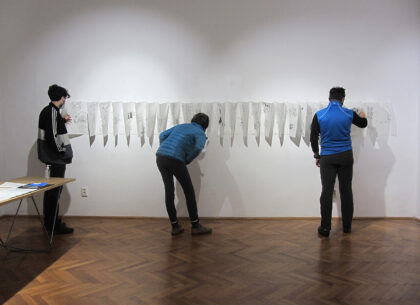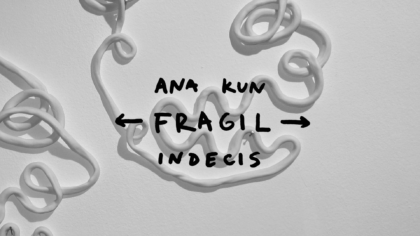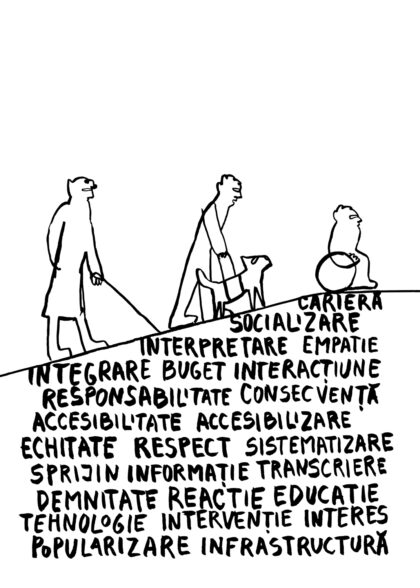Collecting Dust / S-alege prafu’ – Ana Kun for Sandwich‘s project Double Decker. A set of instructions to make an intensely collaborative piece about fragility and intimacy with domestic collected dust and artifacts.
Instructional works by the artists
Ge Yulu, Andreea Vladut, Smaranda Ursuleanu, Ovidiu Toader, Stefan Tanase, Ioana Stanca, Ioana Maria Sisea, Hu Qingtai, Yao Qingmei, Maxim Polyakov, Irina Marinescu, Monotremu, Ana Kun, Lera Kelemen
Double Decker – a project by Sandwich, Bucharest – is based on an Open Call for artists from Romania, China and Moldova, of any age or background, launched in July 2020. 26 proposals were selected. Artists were invited to send Instructions for artworks, that anyone could follow. Each set of instructions, with text, images, video, sketches, became a work in itself.
Through this open call, Sandwich was looking for artists that are at ease with opening up their creative process to others, that can visualize works way before they start to exist, and that are comfortable with letting go of their idea in the hands of a stranger. Double Decker questions the need for (over)production in art and provokes a transfer of ideas from author to producer. In this process, what happens to authorship and how much of the original concept is left intact afterwards? We hope that the complete collection of instructions will become a resource not just for artists, but for anyone that enjoys an insight into the creative process.Sandwich, excerpt from the website presentation
Collecting Dust / S-alege prafu’
A collaborative installation
It should be an installation made from the dust from the vacuum cleaners and dustpans of people around town, separated into components and displayed in a gallery, with a thick layer of dust on the floor, the artifacts found in the dust on tables, the names of donors and sketches on the walls. The actual installation is less important than the collecting of the dust from people through various means and by doing so, creating a small community that can come together and alter the final piece.
The process of gathering dust is associated with the lack of action. The very idea of this installation was gathering dust for 8 years. In this time, it only became more layered, if we think of the growing pollution, the shortage of green space, increase in traffic etc. In short, the town is more dusty than ever. It’s an installation about the frustration that comes from the feeling of powerlessness, but needs a huge amount of energy and time to be built. It uses one of the most cheap materials, which is everywhere around us, on us, of which we are part of with our hair and dead skin cells and what not. A material which is never considered a resource despite its abundance.
The process has several stages. First should be announcing the dust collection, using all methods cheap and friendly, because such a crazy idea should be built on human connection. I propose a year-long open call for people to donate the content of their vacuum machines, in a bag, which would be catalogued and numbered.
After a year, the bags would be open and the content sorted and separated: hair, dust, plastic, metal, bits & bobs, the process documented. The dust would be used to cover the ground surface of the space (gallery), while the artifacts found would be presented on tables or in boxes. All documentation would be made available on the walls. All the people who donated time or waste would be credited as artists. The visitors will involuntarily draw their movements in the dust, while collecting some of it on their shoes.
While somewhat cynical at core, the installation has its beauty: it’s an intensely collaborative piece about fragility and intimacy made with unknown resources. At the same time, we are all making and collecting dust while waiting for something to happen.
excerpt from the proposal
